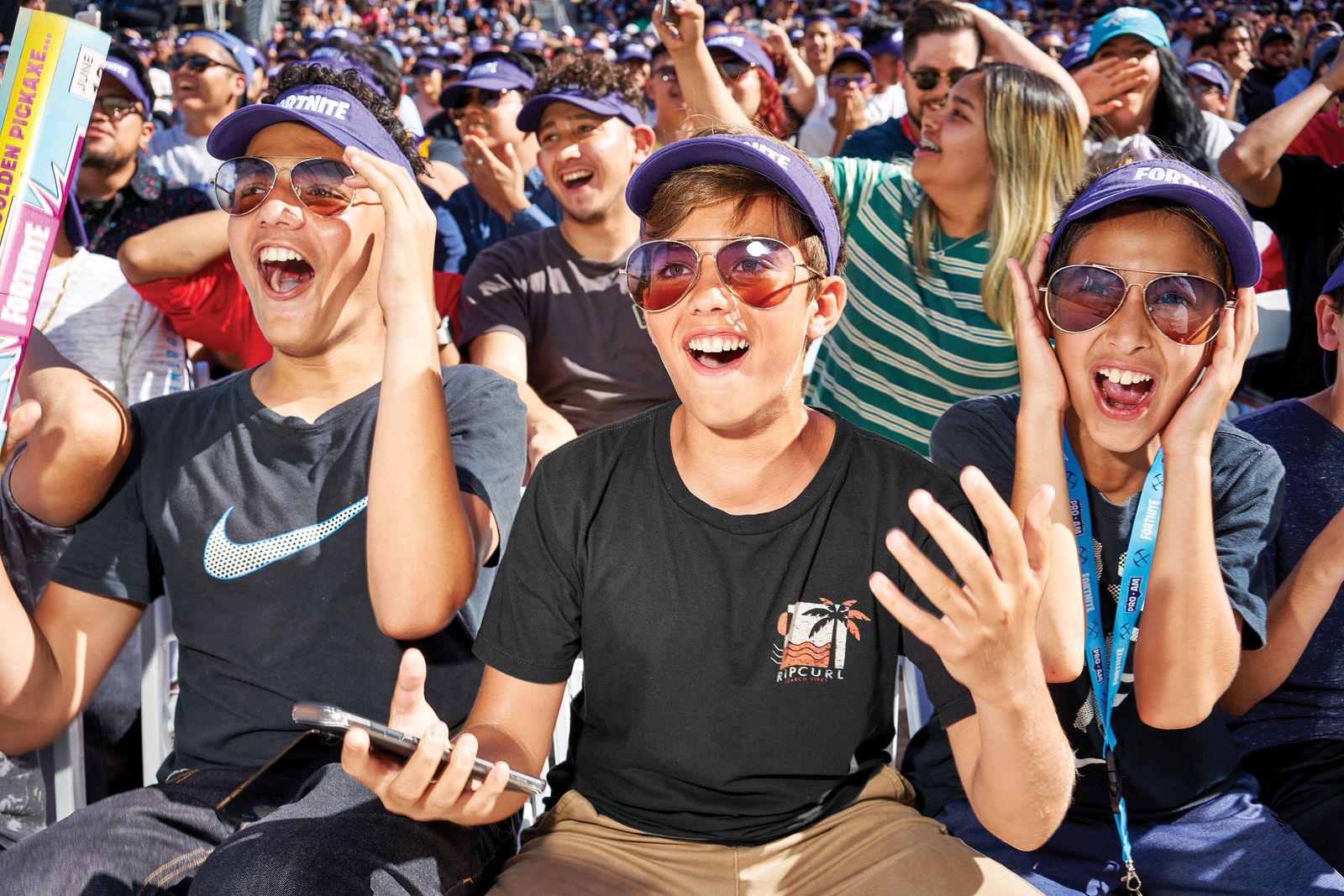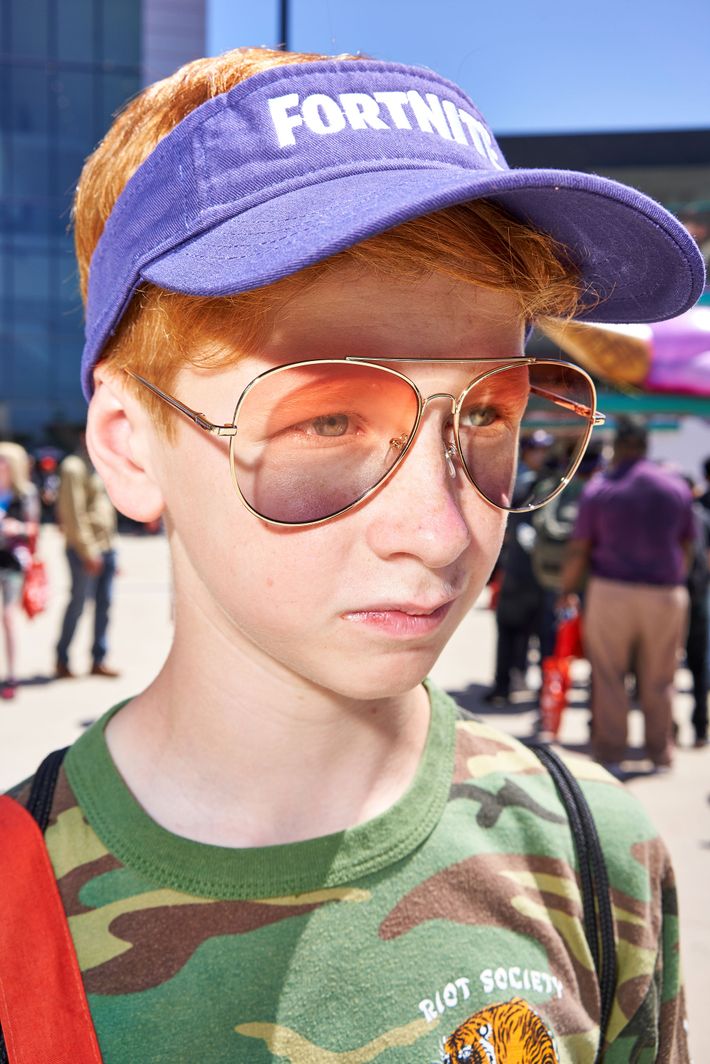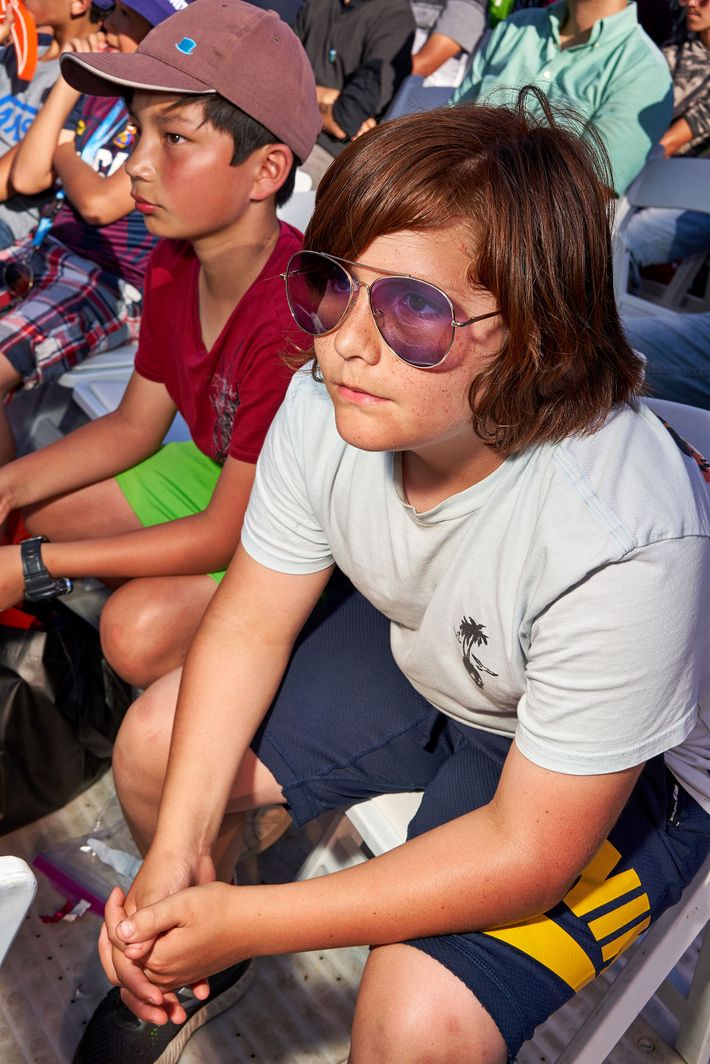When Kylie Milligan met her boyfriend in their high school’s parking lot in May, she found him holding a sign that would be nearly incomprehensible to anyone who has not recently spent a significant amount of time around teenagers. “Now that I’m John Wick, get this John Dick @ PROM,” the poster read, also featuring a yellow “#1” and a man in a suit. Milligan, naturally, understood the sign immediately. This was a “promposal” — an elaborate ritual modern teenagers undertake when asking dates to prom — written in the language of Fortnite, the most popular video game on the planet. The “#1” is what players see when they win a match. The man in the suit is “John Wick,” known officially as Reaper, a Fortnite “skin,” or costume, that could be unlocked only by the most dedicated players. The message was clear: Now that her boyfriend had conquered Fortnite, it was time to focus on prom. Milligan, a 17-year-old from Peterborough, Ontario, told me she found the promposal “actually really hilarious.”
Since it launched in July of last year, Fortnite has risen to become the most important video game currently in existence. The 100-player, last-man-standing video-game shooter is obsessed over by rappers and athletes, hotly debated in high-school cafeterias, and played by 125 million people. All this, not because of a major technical or graphical breakthrough, or for a groundbreaking work of narrative depth, but for, essentially, a simple, endlessly playable cartoon. On a colorful island peppered with abandoned houses, towns, soccer fields, food trucks, and missile silos, players don colorful costumes, drop out of a floating school bus, and begin constructing ramshackle forts that look like they’ve popped straight out of a storybook, before blowing each other to smithereens.
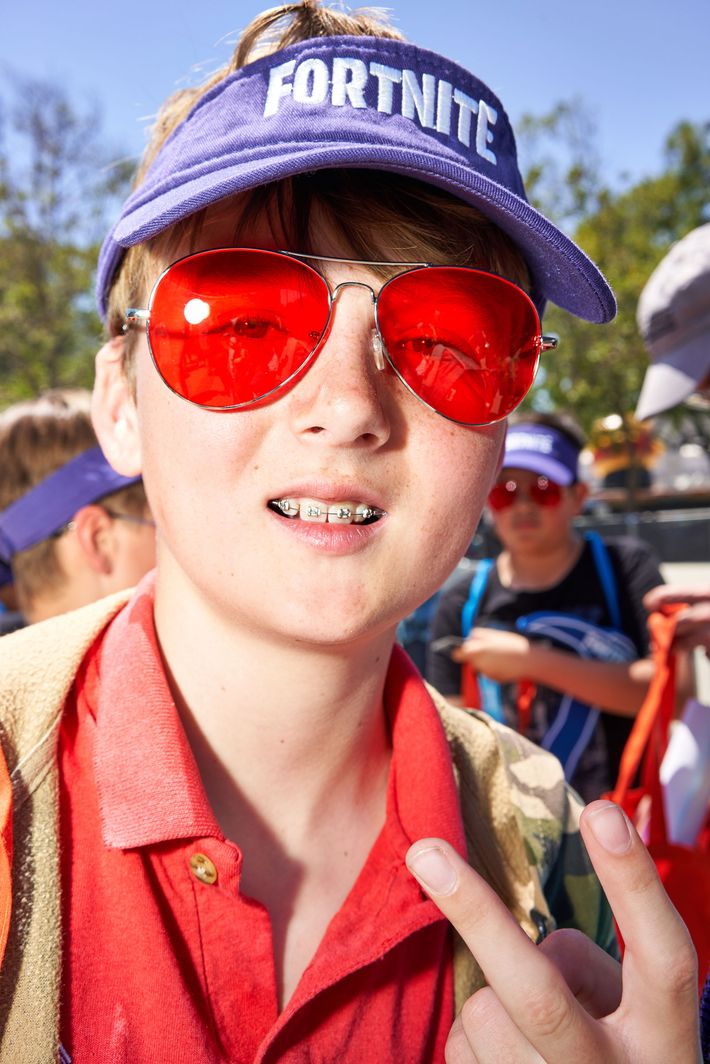
Every number released in conjunction with Fortnite is staggering, even within the context of a $137 billion industry. On the same day as its Fortnite Pro-Am tournament at E3, the video-game industry’s largest convention, the game was released for the Nintendo Switch, and within 24 hours it had been downloaded more than 2 million times. Analysts estimate that Fortnite is currently raking in more than $300 million a month, and has made its maker, Epic Games, more than $1.2 billion since its battle royale mode launched in late September. That’s all from a game that’s free to download and play unrestricted. The money comes from optional transactions that let players purchase new costumes, items, and dance moves for their avatars — merely cosmetic improvements that have become very lucrative.
Even if you aren’t paying attention to the numbers, Fortnite is impossible to escape. Pro athletes are performing victory dances from the game. When Boston Red Sox pitcher David Price was diagnosed with carpal tunnel syndrome in May, he stressed that his extensive Fortnite habit was not to blame, but promised to stop playing it anyway. In late February, Roseanne Barr, or someone with access to her account, tweeted, “I have 20 fortnite victory royale wins.” Millions of adolescents are sinking hours into it every day, including on smartphones during school hours. That’s because Fortnite is virtually identical on every platform, and players can move from their PlayStation to their phone and back without missing a beat. Milligan first heard about the game back in September. “It was the next new game, like when Minecraft came out, but way more popular.” She eventually got into the game, but doesn’t play every day “because I do have a life and a job.” When she does, her sessions last about three or four hours. Her boyfriend, on the other hand, “plays religiously, around 8 to 12 hours a day.” She estimates that at least 900 kids at her school are playing it.
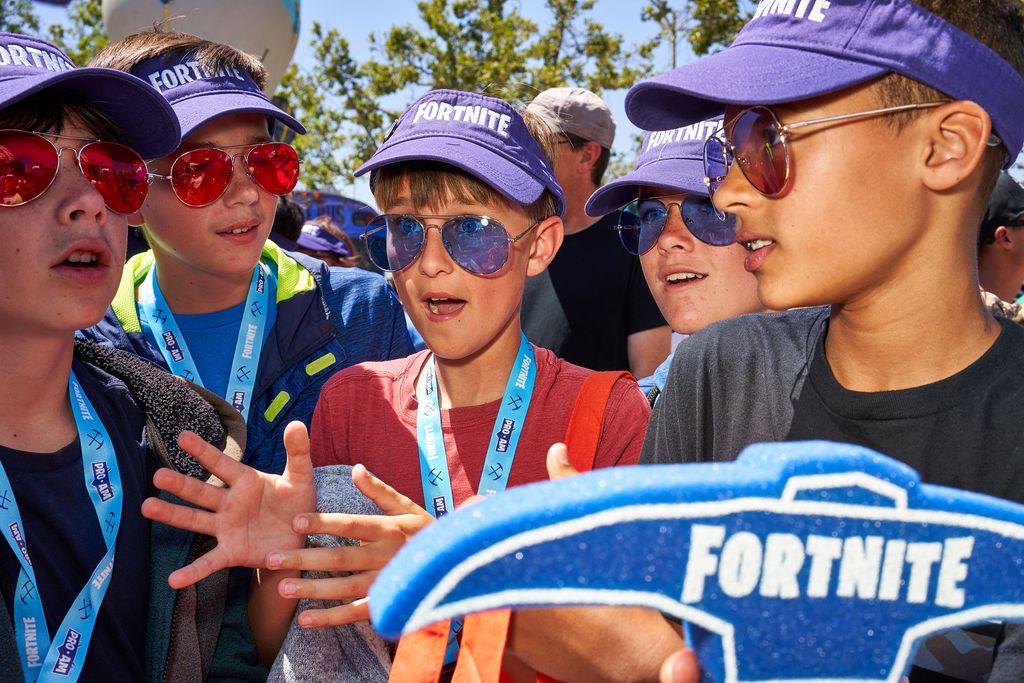
This might seem a bit surprising if you understand Fortnite as just the latest in a long line of very popular video-game shooters, like Call of Duty or Halo — games whose semi-regular installments get plenty of initial attention from gamers and media outlets. But the cultural presence of those games usually peters out after a few weeks or months, as gamers and journalists move on to the next big thing. Fortnite, by contrast, seems here to stay because it’s modeled not as a series with annual installments, but as a persistent online world that’s always under construction. It feels less like a thing you log in to every few days to waste some time and more like an app that you’re constantly pulling to refresh, always something new to see. In this way, social platforms with bright, sunny aesthetics that constantly add a rotating and growing set of features that keep users coming back, building up a platform-specific identity, provide better points of comparison than other video-game shooters. Fortnite is a candy-colored video game populated by friends and celebrities, with quantified metrics for success tucked into every corner, constantly updated, highly social, usable anywhere, dopamine-releasing, and extremely competitive. In other words, the way to think about Fortnite isn’t Halo, but Instagram. Not Call of Duty, but Snapchat. What’s the difference between racking up kills and racking up likes?
In June, in something between a coming-out party and a coronation, 3,000 (and more than a million online) gathered during E3 in Los Angeles to watch the best players in the world compete in the Fortnite Pro-Am, pitting IRL celebrities like actor Joel McHale and NBA star Paul George against the game’s own godlike celebrities like Ninja and Myth. The amateurs knew they were outclassed; rapper Lil Yachty did not even try to present a best-case scenario. “I’m honestly terrible,” he told me before the event, “but keep that between me and you. That’ll come out after.” Outside the Pro-Am, crowds stood at the gates waiting to take their seats on the field. Some had been waiting in the hot California sun for more than an hour, and everyone was wearing purple visors emblazoned with the Fortnite logo. A few die-hard fans got their faces and arms painted with llama piñatas (the game’s de facto mascot) or umbrellas (a Mary Poppins–esque item unlocked when players win a match).
Geek-culture gatherings, like PAX or Comic-Con, are not particularly known for roomy accommodations and effective crowd control. But Fortnite’s two big events — the tournament and a party, held in Los Angeles during the year’s most important video-game trade show, the Electronic Entertainment Expo, better known as E3 — were both lavish, and conspicuously spacious. The implied message in the surplus of personal space was that Epic had the resources to make its events not just tolerable, but comfortable. It seemed less to reflect under-attendance and more the remains of piles of money being burned.
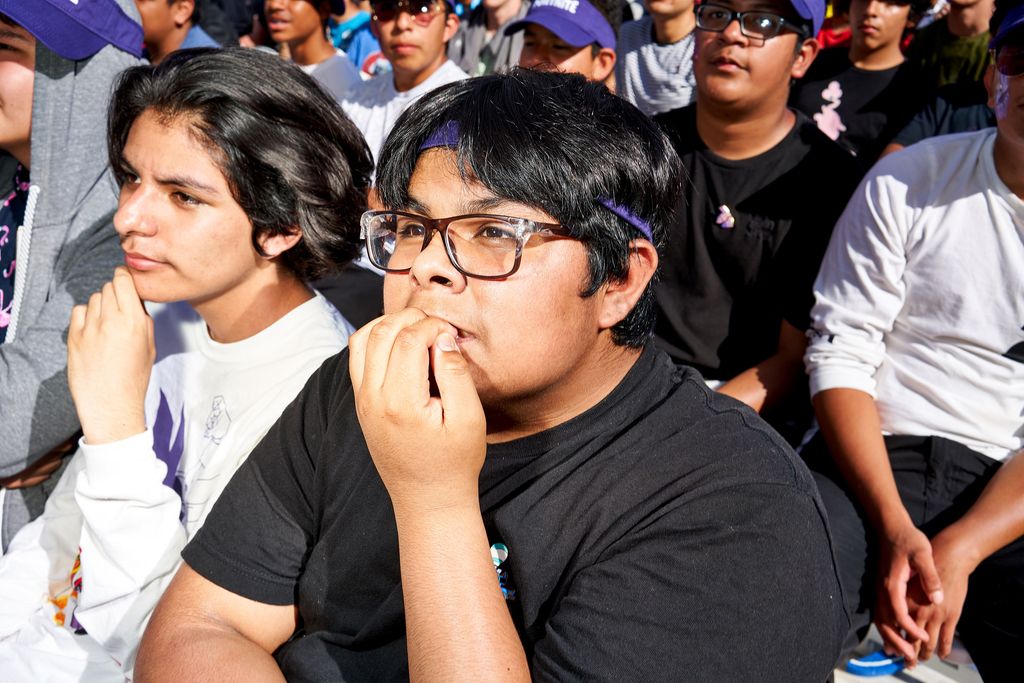
To longtime video-game industry watchers, the success of Fortnite is, even now, a little surprising. After more than a half a decade in development (most major-studio games are turned around in two or three years), the game was released in July of 2017 as an “early access” game — meaning that people could play it, but it was still in active development and subject to change significantly. In its original form, Fortnite was what is known as a “player versus environment” or PvE game. Confronted by a shambling horde of zombies, a small group of players is tasked with working together to construct a fort and, naturally, kill the zombies. The PvE mode, called “Save the World,” did not exactly set the world of video-gaming ablaze.
But just four months before Fortnite’s release, a PC game (that is, for desktop computers) had set the world of video-gaming ablaze. In PlayerUnknown’s BattleGrounds — usually referred to as PUBG, or “pub-gee” — 100 players parachute onto a large island, and then scavenge weapons and hunt each other until only one person is left standing. As the numbers dwindle, a contracting circular border pushes remaining players toward each other and into skirmishes. The game mode was called “Battle Royale,” named after the Japanese novel and movie in which schoolchildren are similarly forced to fight for survival. Also released as an early access game, PUBG quickly shot to the top of the charts, its growth driven not by aggressive marketing, but by word of mouth and streamers on sites like Twitch. (By now, it’s sold 50 million copies on PC and Xbox, at 30 bucks a pop, and has seen hundreds of millions boot up the free-to-play mobile version.) It was only a matter of time before other, larger companies tried to duplicate the game’s incredible success.
Epic, the company behind Fortnite, was maybe the best positioned to do so. Epic is best known for creating Unreal Engine, video-game code that it licenses to other developers. It is one of the most widely utilized pieces of software in the video-game industry, powering shooters, role-playing games, racing games, and everything in between. “Epic has the ability to look outside of its own studios, with some degree of visibility, into everybody else’s world,” said Joost van Dreunen, the head of video-game market-research firm SuperData Research. (Epic declined to make anyone available to comment for this article.) The Unreal Engine is also platform-agnostic, meaning it performs well on PCs, home consoles, and mobile phones, a versatility that would prove crucial to Fortnite’s success.
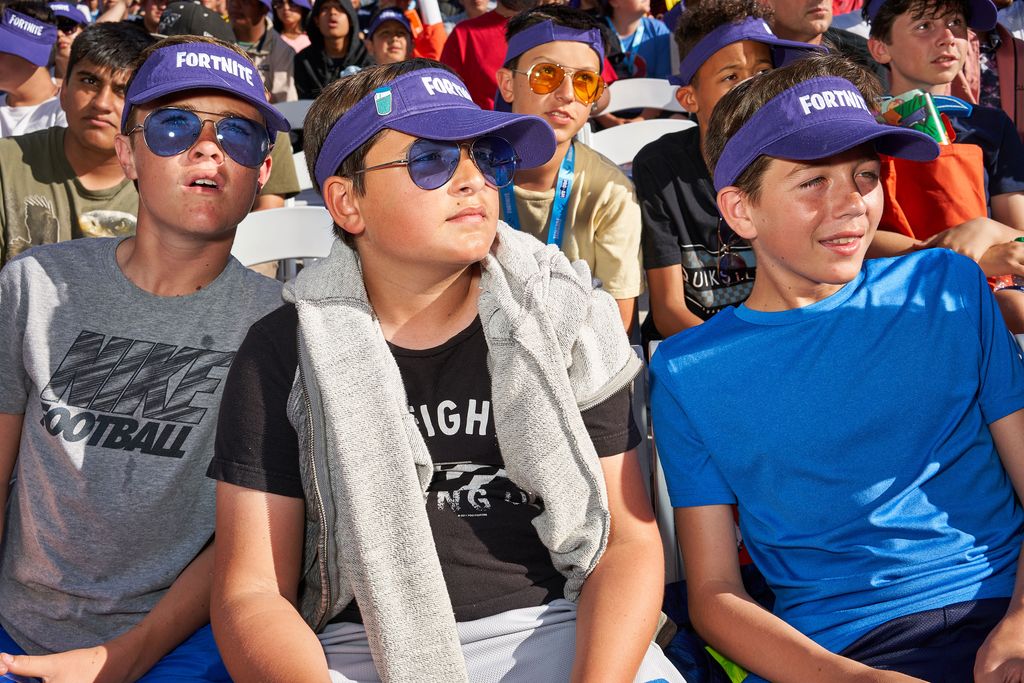
In late September, just two months after launching the original Fortnite, Epic announced Fortnite Battle Royale, a free-to-play mode that mimicked much of what made PUBG popular. “PUBG is this sort of indie sleeper hit that was slowly cultivated by hard-core fans. It’s very serious, sort of military,” van Dreunen said. “And then Fortnite is this cartoony nonsense, and exactly for those reasons it’s more mainstream and more fun.” Instead of dropping out of a cargo plane, players jump from the Battle Bus, a blue school bus suspended by a hot-air balloon. Landing locations were given cutesy nicknames like the urban Tilted Towers or the toilet-filled Flush Factory. Weapons can be found in glowing treasure chests, and bulletproof vests were replaced with shield-generating, Day-Glo-blue “slurp juice.” Instead of getting killed, players get “eliminated.” There is no blood. The overall aesthetic is as if you were playing a video game based on a Snapchat filter.
The cadence of a Fortnite game is that nothing is happening and then, very suddenly, everything is happening. The game has three main modes: solo (every player for themselves), duos (teams of two), and squads (teams of three or four), but there are consistently around 100 players in every session. After players land on the island, the first objective is usually to scavenge. Swing a pickax-shaped “harvesting tool” at virtually anything that’s not natural terrain, like you might in Minecraft, and you’ll come away with a stockpile of wood, stone, and metal, used to construct makeshift towers and platforms. Find glowing treasure chests and weapons lying around to build up an arsenal, and defensive items like the shield-granting “slurp juice” to give you an extra advantage. More often than not, you and your teammates will be alone for minutes at a time, deciding where to go, what to do next, and whether you’ve got enough time for a detour before “the storm” closes in (head outside of the circular boundary into the storm and you start taking damage).
And then things change. Maybe you hear gunshots echoing in the distance or the rustle of feet creeping up behind you. Pinpointing sound is key for these games. You spot the faint glow of someone hopping around and building a tower in the distance, and you tense up, having to decide whether to pursue them or leave them be. Maybe they see you, and they start building ramps and platforms on their way toward you. Unlike most multiplayer online shooters, you only have one life, no respawns. You don’t regenerate health automatically, though you can find bandages and med kits to heal yourself (or give to teammates if you’re playing in a squad) after making it out of a skirmish alive. But for most players, it’s not uncommon to finish the match with just one or two kills — or, in my case, as someone who doesn’t have hours each day to sink into Fortnite, none.
Getting those kills can be a relief because more often than not, the one-on-one matchups happen in isolation. When you knock down a player, you’ve got time to celebrate or do a funny victory dance (character animations, like costumes, are available for purchase from Epic for a few bucks), and then the creeping dread starts to sink in again. As the final handful of players head toward each other, more elaborate towers start to appear. Each player tries to gain high ground and advantage as they attempt to blast each other with shotguns. More often than not, Fortnite encounters end with a lot of bunny-hopping and shotgun blasts. Because you can’t immediately gauge your opponents’ health level, it’s always a relief when they go down.
PUBG was very much an in-progress game, made by a smaller team that didn’t have years of experience making a shooter. Epic, on the other hand, had decades of experience making shooters like Gears of War, privileged access to the engine on which its game ran, and a near-finished game that it could quickly retrofit for the current trend. Plus, Fortnite was already up and running on consoles like Xbox and PlayStation, the most popular hardware for gaming — PUBG wouldn’t come to a console system until the end of 2017, and the game was still a messy work in progress then. At the E3 convention in June in Los Angeles, Fortnite had a large booth on the main show floor, complete with replica makeshift towers and a full-size Battle Bus. PUBG had a meager presence dedicated to the mobile version of its game in the lobby by the exit. If you weren’t looking for it, you might have walked right past.
One important quality that’s set Fortnite apart from its predecessors and competition in the professional-gaming world is that it has thrown the idea of consistency completely out the window. Other games that want to become competitive gaming businesses with tournaments and leagues — “eSports” — place a significant emphasis on consistency. The maps that players compete on are honed over the course of months or years so that no one person can gain an uncontestable advantage. Because Fortnite takes place on a sprawling map, Epic has the ability to change significant parts of the land without really upsetting the balance of the game. A couple of months ago, asteroids started appearing in the sky over the map, and then a week later, they started crashing into the ground, changing the terrain. On June 30, a missile silo that had recently been added to the map activated, launching a rocket into the sky. Players stopped fighting to watch it happen. Some built towers to give other players a better view. One player managed to kill 48 of his fellow competitors during the event, violating the unofficial cease-fire.
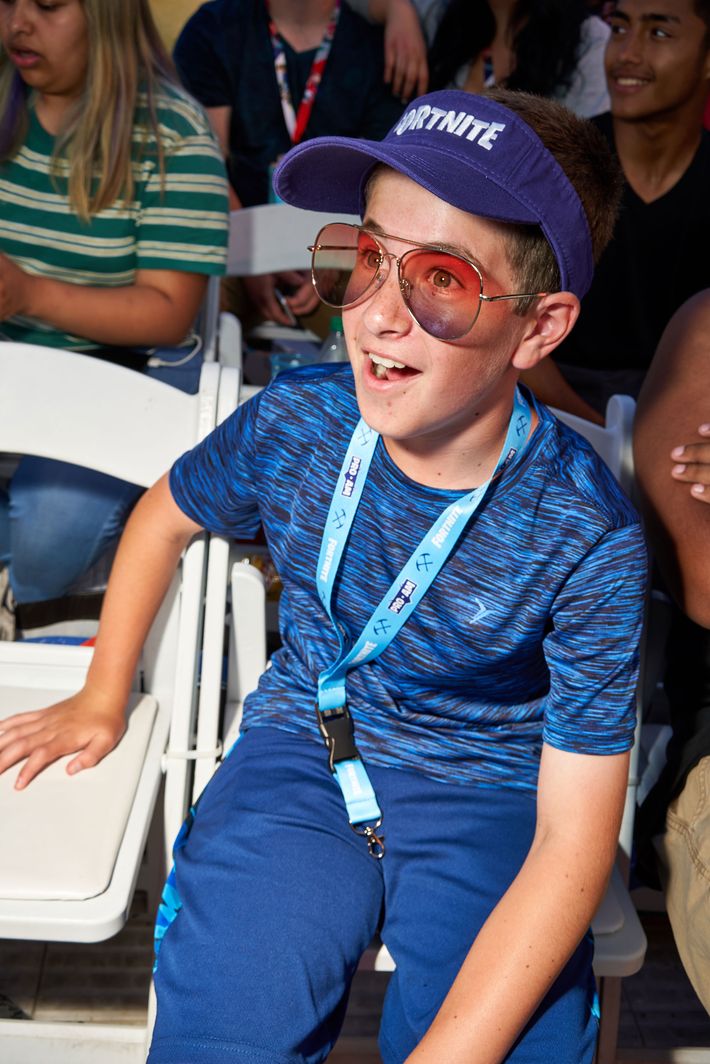
The Fortnite Pro-Am in June was a trial run for its next big push into the tournament scene. “We’ll be supporting community-organized events, online events, and major organized competitions all over the world, where anyone can participate, and anyone can win,” Epic’s K.L. Smith said in an introductory video, reiterating that Epic had already pledged $100 million to the program. Then he continued: “This is for you, the players. Qualifications for the Fortnite World Cup will be based on merit. Epic will not be selling teams or franchises, and won’t allow third-party leagues to do so either.”
The structure of the tournament paired 50 popular Twitch streamers and YouTubers with 50 celebrities. I’m using the term celebrity here loosely. Once you got past a few recognizable names in pop culture — mostly athletes like Reggie Jackson and musicians like R&B singer Ty Dolla $ign — you could spend a lot of time Googling the roster and learning new things. (“Okay, here’s a secret: I actually don’t know many of the people here,” Markiplier, a YouTuber who has 20 million subscribers, admitted.)
But the kids weren’t really there for the “celebrities.” Or not for the ones being pushed as such. Ahead of the event’s start, the hype man warming up the crowd got a bigger response asking “Who’s excited for the streamers?” over “Who’s excited for the celebrities?” The most animated members of the crowd, mostly made up of young boys and their patient chaperones, were more likely to recognize mononyms like Markiplier, Myth, and, of course, Ninja.
Ninja, whose real name is Tyler Blevins, makes an estimated half a million dollars every month streaming Fortnite rounds on Twitch, a service for livestreaming video games that is owned by Amazon. Since launching in 2011, Twitch has become a driving force in the video-game industry, as viewers now spend hours a day not just playing video games, but watching others do so live as well. Being popular on Twitch can make or break a game, as happened with PUBG. Most of Blevins’s revenue comes from Twitch subscribers and YouTube ad revenue, though he also earns money from product sponsorships and when he wins tournaments. That sounds like the world’s cushiest job, but Ninja is dedicated to the craft. If you have push notifications turned on to alert you whenever Ninja goes live, it can often seem like the guy is streaming 24/7. And he is very good at Fortnite, pulling off incredible shots while simultaneously conjuring elaborate platforms and structures out of thin air. Even for a video game, it’s a dizzying display of agility.
Ninja’s role in the Fortnite origin story has to do with the Drake stream. On March 14, around midnight, Ninja streamed the game with Drake, single-handedly legitimizing Fortnite as a mainstream juggernaut. The stream also featured special guests rapper Travis Scott, NFL player JuJu Smith-Schuster, and online-piracy mogul Kim Dotcom, and broke the record for most concurrent viewers of a non-tournament stream — 628,000 people. How the stream came about is a perfect illustration of 21st-century celebrity networking: Drake told Ninja that he’d seen highlights of Ninja on Instagram. Ironically, it was footage of Ninja playing not Fortnite, but PUBG.
For all of his success, Ninja doesn’t stand out too much from other online stars. He’s lanky, young, white, and currently sports neon blue hair. If you saw a picture of him, you would immediately say, “That guy earns his living playing video games online.” Though he might not have the most, let’s say, boisterous personality when it comes to modern celebrity, there’s a quiet competency to his work. On the Drake stream, for instance, he played interviewer while also putting on an in-game clinic. He asked the rapper about his diet, and about when his new album would be coming out. He also, live on the stream, coached Drake through installing Discord (a popular app most easily described as “Slack, but for gamers”) on his phone, so they could communicate better.
While other players milled about and rubbed elbows in the stadium’s field club pregame, Ninja stayed mostly out of sight. In the brief moments he appeared publicly, he was mobbed by kids and adults looking for a picture. As players made their way onto the field, Ninja and his partner Marshmello had the honor of appearing last. The kids went nuts.

Because Fortnite has cultivated distinct individual personalities, like Ninja and Myth, “it would behoove them to have a World Cup that focuses on solos and duos, as opposed to a situation where there are teams of six or whatever, and the team is what people are rooting for,” Maddy Myers, who covers eSports for Deadspin, told me. “In this situation, because of the way the game works and the way the fandom has been created, they can focus on these solo players who are famous, and use that to market their game.”
Epic is selling players on a digital dream, just like plenty of internet services prior. Even if you’re a nobody from nowhere, you have a tangible path to becoming the next Ninja. “When NBA players started playing, like Kyle Kuzma and Paul George, and when Drake went on and started playing, too,” said Chris Marshall, a global-history teacher at Bronx Leadership Academy II, “that’s when the momentum really started to pick up because then [my students] saw, like, Guys who I already think are pretty cool are playing it as well.”
If you’re good enough at Instagram, you can find a modeling career. If you’re popular enough on Twitter, you can find a job writing professionally. If you excel at Fortnite, you can find yourself chilling online with A-listers like Drake. All you need is a mouse and keyboard, and enough determination.
Its low price (free), its first-to-market presence on popular consoles like the PlayStation, and its behemoth development studio — all helped Fortnite reach this global, ultramainstream level of popularity, but in conversations with gamers and streamers and fans at the Pro-Am, the most frequent reason I was given for its popularity was the simplest one: It’s just fun. It’s a decidedly Apple-ish approach. Epic didn’t come up with the battle-royale idea, but it almost certainly does it the best. “It’s just fun, man,” Lil Yachty told me. “Like a catchy song, it just feels good.”
Even when kids aren’t playing Fortnite, they’re talking about Fortnite or finding ways to profit from it. An exasperated lacrosse coach told parents, “Not Everyone, but most of our team, focuses on the Fortnight Video game [sic] instead. My son is leading this pack and like most others, he has spent very little time, if any, practicing and preparing on his own. Instead they play the video game as much as they can and waste our time in practice talking about it.”
In Amsterdam, writer Owen Williams documented, those confident enough could pay enterprising kids one euro to test their luck at Fortnite on a sidewalk, set up on a PC.
Frustrated significant others are breaking down and looking into this new game they keep hearing about: Fork Knife.
(Epic later added a Fork Knife food truck to the game.)
On Reddit, a parent of a Fortnite fan posted his child’s disciplinary form. His son had gotten in trouble for calling another student a “Rust Lord,” one of Fortnite’s lower-level skins.
“There are dances that a lot of boys kept doing in my class at school, like ‘Hype’ and ‘Orange Justice.’” Quinn Kennedy, a 10-year-old from Pennsylvania, told me. For a show at her school, “they had to ban ‘Hype’ and ‘Orange Justice’ because then it would ruin the show.”
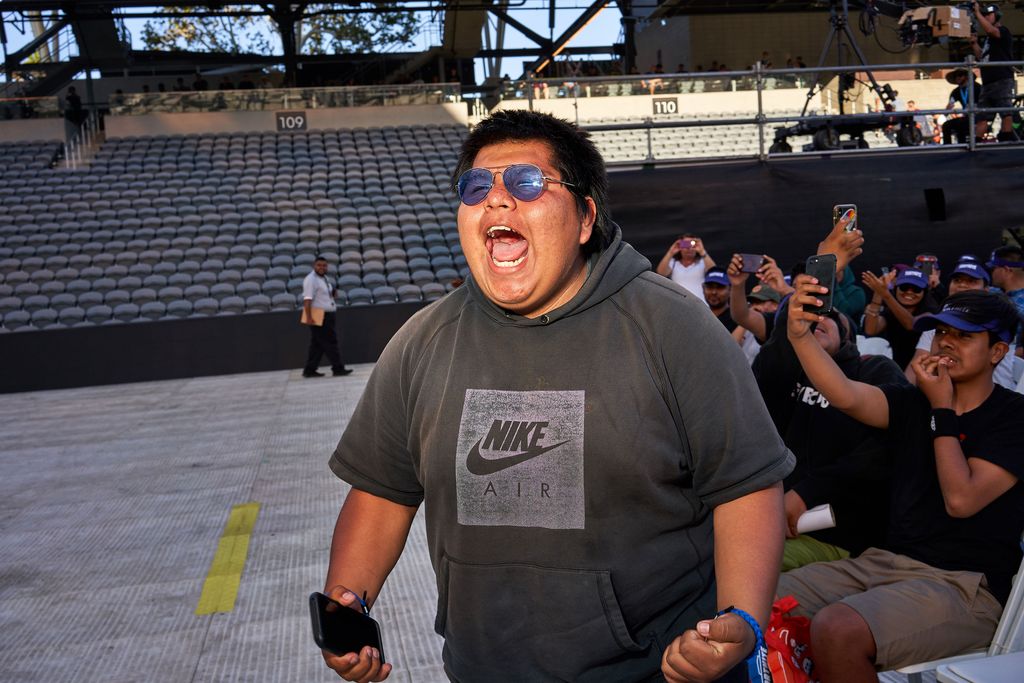
Quinn’s sister Catherine, 14, said that the game can also function as an impromptu chat room. “If we’re just bored and we’re video-chatting on our phones, and someone just proposes the idea, like, ‘Hey, do you want to go play Fortnite?’ we’ll play, but we’ll talk about stuff that’s going on in school or pretty much anything else,” she said. “I think it gets a little monotonous to play the game and just talk about it the whole time.”
Like any modern internet-software phenomenon, Fortnite is sustained by an almost predatory number of dopamine-inducing metrics. The game’s calendar is broken up into ten-week seasons. Within that time frame, users can level up; you’ll level up faster if you own the 100-tier Battle Pass, which Epic sells for $10 per season. Each tier in the pass bestows a new cosmetic item or perk, like a costume (known as a “skin”) or a character animation (“emote”). In order to level up the Battle Pass — which is, stick with me here, different from the player’s season level — players need to collect stars by completing challenges, such as getting kills with a certain weapon or in a certain location. These challenges are unveiled on a weekly basis, meaning that there is always an incentive to check in, and there is always a sense of progression, even if you never win a game. Progress bars keep filling up, and each week there are new progress bars to fill. Season five of Fortnite begins today, bringing a whole new set of unlockables and challenges, and loose narrative shenanigans, for players to obsess over and collect.
A key part of Epic’s plan to help people build an identity around Fortnite is cross-platform functionality. Through a centralized Epic Games account, items you unlock playing on PC or on mobile or home console can be used on other platforms, and in some cases, you can compete against players on other systems. Previously, these ecosystems have been completely walled off from each other — Xboxes could only talk to Xboxes, etc. — but Epic has a fully unified platform-agnostic system ready to go. While Microsoft and Nintendo have embraced cross-platform play, Sony has not. This led to a rude awakening in June when many Switch players booted up Fortnite and found that they could not sign in to their main accounts because Sony would not allow PlayStation-linked accounts to function on competing systems. Players had to start from scratch, and none of the unlockable items they had earned or bought would carry over. To everyone except Sony, the restrictions made no sense; it would sort of be like if you had to create a new Facebook account for each device that you use the service on. Sony has since said that it was working on coming up with some sort of compromise, but it is incredibly rare to see a software company be able to pressure a hardware company. It hints at a shift in the balance of power, where the people making hardware now have to cater to the software that they want to have on their platform, and not the other way around.
This is a familiar dynamic. Across the tech industry, more and more software companies are shifting to services. That is, instead of selling one copy of a piece of software for a fixed price, they sell continual access to that software for a recurring fee. Other competitive games, like PUBG and Rocket League, have announced plans for similar “passes,” while perennial franchises like Call of Duty and Battlefield have each announced its own plans for a battle-royale mode.
Fortnite’s transactions are technically “optional” in that paying for them will not give players an advantage over other players — paying for upgrades will not give anyone a greater chance of victory. But Fortnite is less a game than it is a lifestyle, talked about in classrooms and on social media 24 hours a day. “I’ve had kids come in like, ‘Mister, I’m mad tired,’” Marshall says. “I’m like, ‘Why?’ They’re like, ‘I was up until 3 playing Fortnite.’ And then I see them taking out their phone! They’re opening up the game on their phone. I’m like, ‘Dude, what are you doing!?’”
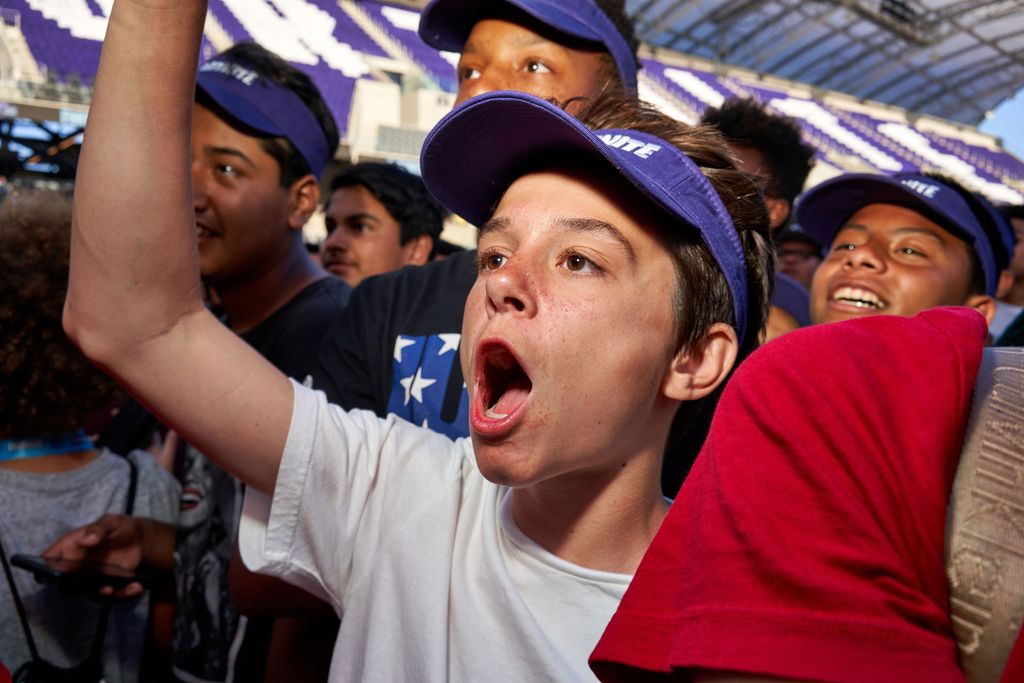
If you don’t have the Battle Pass, are you even making progress in the game? If you don’t have the Reaper skin, unlocked upon reaching Tier 100 in season three, are you even any good at Fortnite? Playing as Reaper might not make your shots pack any more punch, but it’s an intimidating status indicator. There is a certain dread that comes with spotting a team of four John Wicks from a distance and knowing that you never even had a chance. The effect — whether that be envy or fear — of seeing players who have unlocked or dropped actual money on certain costumes is unquantifiable, but it’s there. Bragging rights in polygonal form.
Video games pioneered the dopamine-rush cycle. Using bright graphics and sound effects to make players feel continual accomplishment, arcade games were honed to make players feel like they needed to feed in just one more quarter over and over again — slot machines that kept people entranced without ever having to pay out. The addictive core of video-gaming never went away, even as games became more complicated: Every win, every high score, every 100 percent completion, every secret and Easter egg was a chance for a little rush of accomplishment and satisfaction.
And then mobile products learned to do the same thing. Give people goals, reward them with flashes of color, and you could entrance them into something resembling addiction. This was called, tellingly and unsurprisingly, “gamification”: Treat every app and every activity as a video game, with scores, prizes, and leaderboards. Snapchat rewarded users who talked every day with “streaks”; the exercise app Strava allowed you to compete with other joggers and earn badges; Foursquare turned the entire world into a game of king of the hill.
The process has come full circle. Fortnite is a gamified video game. You’re competing against other people in each game, obviously. But you’re also competing with them across the course of a season. And, most importantly, you’re competing against yourself. Just like running two miles instead of three on a fitness app means you won’t get your badge, getting two weapons kills instead of three leaves a progress bar only partially filled, sitting on the main screen, taunting you. You’re not simply supposed to win games, you’re supposed to earn rewards, titles, badges, and skins. You’re playing because it’s fun — but also because there’s something at stake.
And because Fortnite is a social experience. I went to high school with Marshall, the history teacher, and 15 years ago, we’d crowd around lunch tables in central New Jersey and recall mowing down each other with Warthogs in Halo, the legendary Xbox first-person shooter. We’d play often, blow each other up in artful ways, and then boast about our exploits, arguing and laughing and reminiscing the next day. Now, you can save clips of your best stuff and post them online. And thanks to mobile gaming, you don’t really ever have to stop. “It doesn’t seem any different,” he noted. “I just think it’s the fact that there’s the mobile app, which means that you don’t really ever have to stop playing Fortnite. You can get off your system or whatever, your computer, and then come into school and keep playing, [that’s] the big difference.” Another difference is that instead of just one or two tables in a given cafeteria lunchroom being devoted to video-game bragging, it’s most of them.
*A version of this article appears in the July 9, 2018, issue of New York Magazine. Subscribe Now!
